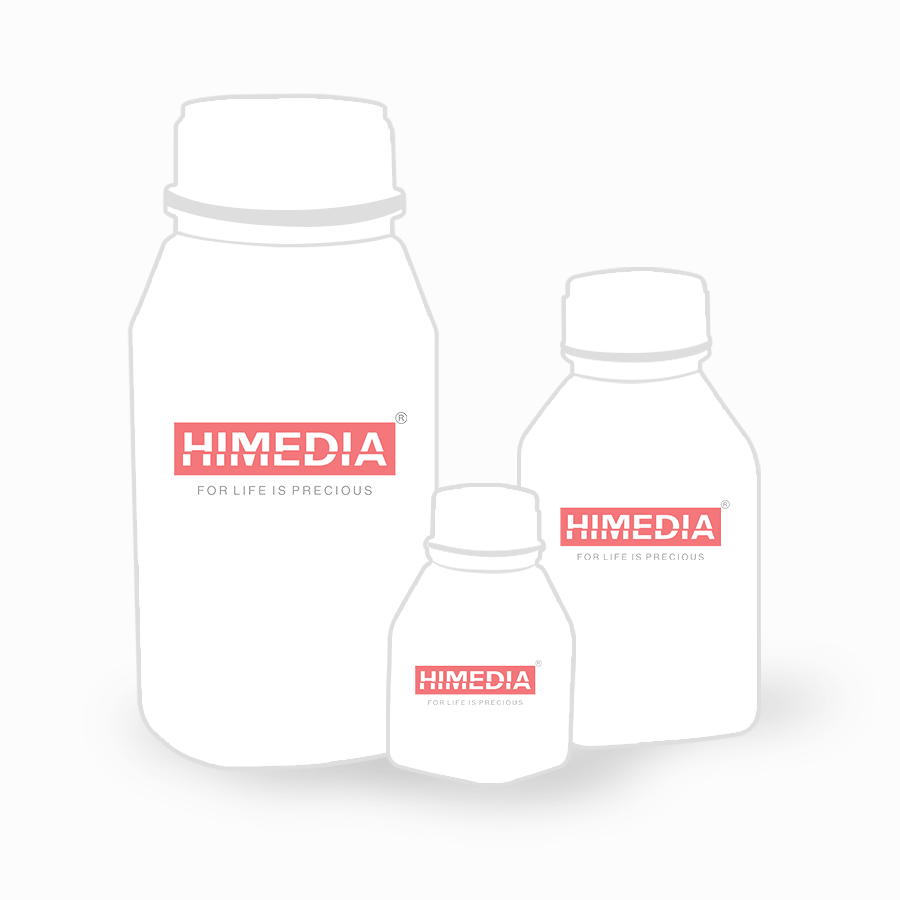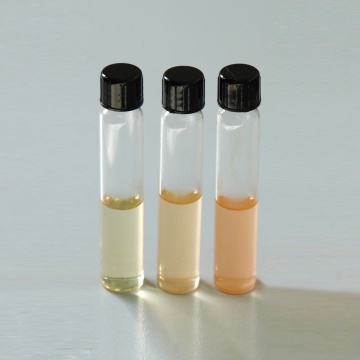 Your enquiry has been submitted
Your enquiry has been submitted
Dulcitol Selenite Broth (Selenite-F Broth w/ Dulcitol) (Twin Pack)
Intended Use
Recommended for selective enrichment of Salmonella species.
Composition**
| Ingredients | g / L |
|---|---|
| Part A | |
| Peptone | 5.000 |
| Dulcitol | 4.000 |
| Sodium phosphate | 10.000 |
| Part B | |
| Sodium hydrogen selenite | 4.000 |
Final pH ( at 25°C): 7.0±0.2
**Formula adjusted, standardized to suit performance parameters
Directions
Suspend 4 grams of Part B in 1000 ml purified / distilled water. Add 19 grams of Part A. Mix well. Heat if necessary to dissolve the medium completely. Distribute in sterile test tubes. Sterilize in a boiling water bath or free flowing steam for 10 minutes. DO NOT AUTOCLAVE OR OVERHEAT. Excessive heating is detrimental.
Principle And Interpretation
Klett (1) first demonstrated the selective inhibitory effects of selenite and Guth (2) used this property to isolate Salmonella Typhi. Leifson (3) investigated the effects of selenite and formulated a media containing selenite. Dulcitol Selenite Broth is a modification of Leifson's Medium with Dulcitol replacing lactose. Selenium toxicity to certain microorganisms is not fully understood but it is suggested that it reacts with sulphur and sulphydral groups of critical cell components (4,5). Enrichment media are routinely employed for detection of pathogens in faecal specimens as the pathogens are present in a very small number in the intestinal flora. Dulcitol Selenite Broth is useful for detecting Salmonella from faeces, dairy products and other specimens.
Peptone provides nitrogenous substances. Sodium biselenite inhibits many species of gram-positive and gram-negative bacteria including Enterococci. Sodium phosphate maintains a stable pH and also lessens the toxicity of selenite. Dulcitol is typically fermented by Salmonella Choleraesuis subspecies Salamae, subspecies Gallinarum, subspecies Paratyphi A, subspecies Pullorum, subspecies Choleraesuis (6). Do not incubate the broth longer than 24 hours as the inhibitory effect of selenite decreases after 6-12 hours of incubation (7).
For routine purpose, selenite broth cultures should be incubated at 35°C for 18 to 24 hours and then subcultured on any combination of greater and lesser inhibitory selective agars.
Type of specimen
Clinical samples: Stool sample
Specimen Collection and Handling
For clinical samples follow appropriate techniques for handling specimens as per established guidelines (8,9). After use, contaminated materials must be sterilized by autoclaving before discarding.
Warning and Precautions
In Vitro diagnostic use only. For professional use only. Read the label before opening the container. Wear protective gloves/protective clothing/ eye protection/ face protection. Follow good microbiological lab practices while handling specimens and culture. Standard precautions as per established guidelines should be followed while handling clinical specimens. Safety guidelines may be referred in individual safety data sheets.
Limitations
- Do not incubate the broth longer than 24 hours as the inhibitory effect of selenite decreases after 6-12 hours of incubation
Performance and Evaluation
Performance of the medium is expected when used as per the direction on the label within the expiry period when stored at recommended temperature.
Quality Control
Appearance: Part A : Cream to yellow homogeneous free flowing powder Part B : White to cream homogeneous free flowing powder
Colour and Clarity of prepared medium: Light yellow coloured, clear solution without any precipitate
Reaction: Reaction of 1.9% w/v of Part A + 0.4% w/v of Part B at 25°C. pH : 7.0±0.2
pH: 6.80-7.20
Cultural Response: Cultural characteristics observed when subcultured on MacConkey Agar (M081,after an incubation at 35-37°C for 18-24 hours.
| Organism | Inoculum (CFU) | Recovery (increase in numbers) | Colour of Colony |
|---|---|---|---|
| Escherichia coli ATCC 25922 (00013*) | 50-100 | none to poor | pink with bile precipitate |
| Salmonella Enteritidis ATCC 13076 (00030*) | 50-100 | luxuriant | colourless |
| Salmonella Typhi ATCC 6539 | 50-100 | good | colourless |
| Salmonella Typhimurium ATCC 14028 (00031*) | 50-100 | luxuriant | colourless |
Key: (*) Corresponding WDCM numbers
Storage and Shelf Life
Store between 10-30°C in a tightly closed container and the prepared medium at 15-30°C. Use before expiry date on the label. On opening, product should be properly stored dry, after tightly capping the bottle in order to prevent lump formation due to the hygroscopic nature of the product. Improper storage of the product may lead to lump formation. Store in dry ventilated area protected from extremes of temperature and sources of ignition. Seal the container tightly after use. Product performance is best if used within stated expiry period.
Disposal
User must ensure safe disposal by autoclaving and/or incineration of used or unusable preparations of this product. Follow established laboratory procedures in disposing of infectious materials and material that comes into contact with clinical sample must be decontaminated and disposed of in accordance with current laboratory techniques (8,9).
Reference
- Klett A., 1900, Zeitsch Fiir Hyg. and Infeskt, 33:137.
- Guth F., 1926, Zbl. Bakt. 1, Orig., 77:487.
- Leifson E., 1936, Am. J. Hyg. 24(2):423.
- Bergeys Manual of Determinative Bacteriology, 9th Edition, 1994, Holt J. G., Krieg W. R., Sneath P. H. A., Staley J. T.,Williams S. T. (Eds.), Williams & Wilkins, London, 241.
- Chattopadhyay W. & Pilford J. N., 1976, Med. Lab. Sci., 33:191.
- Rose M. J., Enriki N. K. and Alford J. A., 1971, J. food Sci.,36: 59 0-593
- Weiss K. F., Ayers J. C., and Kraft A. A., 1965, J. Bacteriol., 90 : 857-862
- Isenberg, H.D. Clinical Microbiology Procedures Handbook 2nd Edition.
- Jorgensen, J.H., Pfaller, M.A., Carroll, K.C., Funke, G., Landry, M.L., Richter, S.S and Warnock., D.W. (2015) Manual of Clinical Microbiology, 11th Edition. Vol. 1.
| Product Name | Dulcitol Selenite Broth (Selenite-F Broth w/ Dulcitol) (Twin Pack) |
|---|---|
| SKU | M1536 |
| Synonym | (Dulcitol Selenite Broth) |
| Product Type | Regular |
| Physical Form | Powder |
| Origin | Animal |
| Packaging type | HDPE |
| References | 1. Klett A., 1900, Zeitsch Fiir Hyg. and Infeskt, 33:137. |
| Customized Product Available | No |








